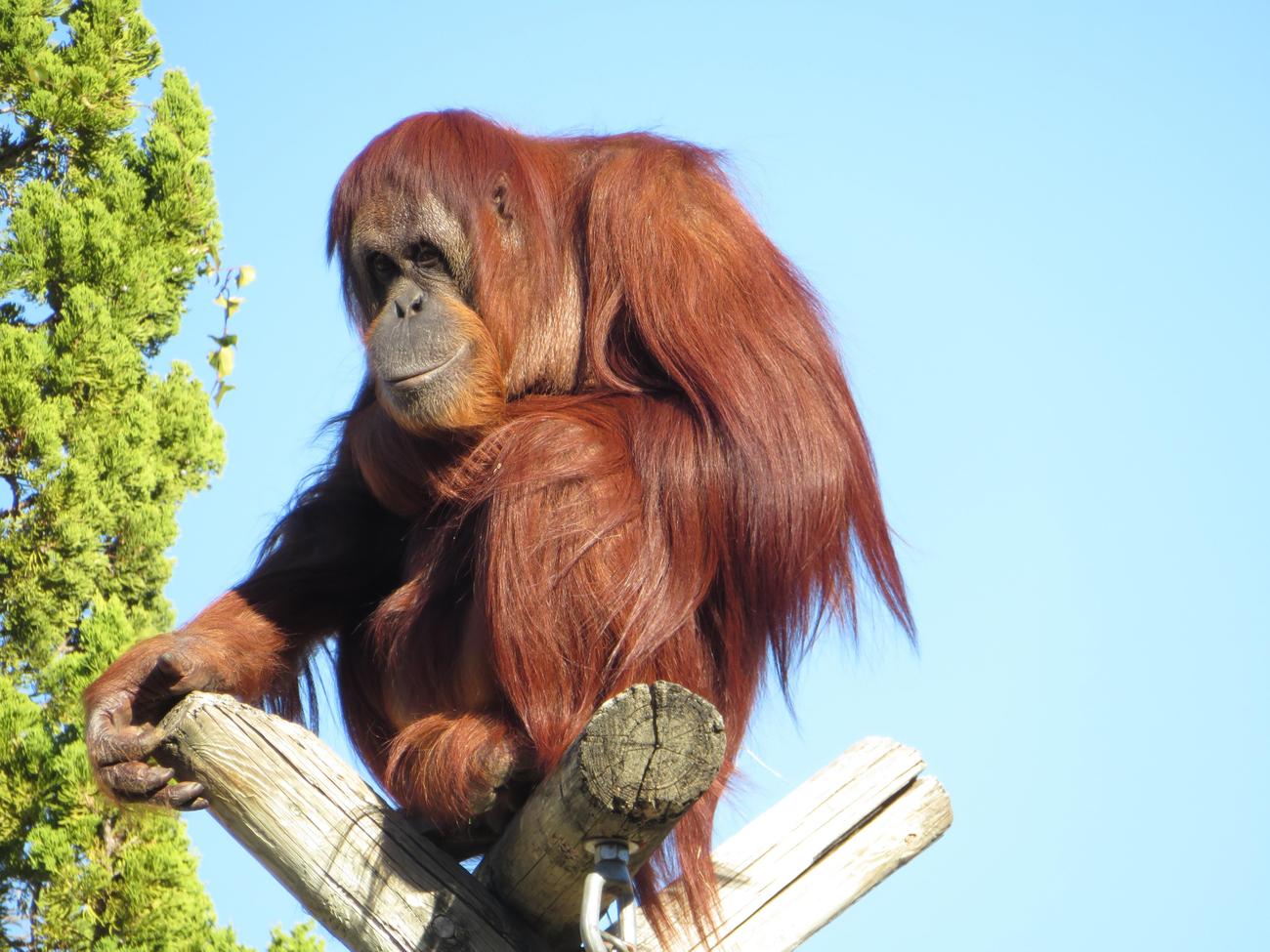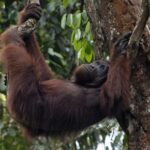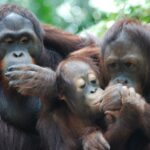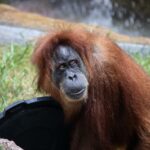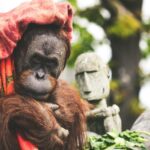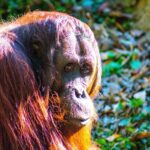Get ready to be captivated by the enigmatic visual traits of orangutans as we delve into the world of these remarkable primates. In this article, we will explore the vibrant facial expressions, striking fur patterns, and elusive eye gaze that make orangutans truly unique. As a seasoned wildlife biologist and conservationist with a deep understanding of their visual characteristics, I will take you on a journey through the intricate visual traits of orangutans, uncovering the secrets that make them worthy of our protection. So, prepare to be amazed by the fascinating visual traits of these incredible creatures!
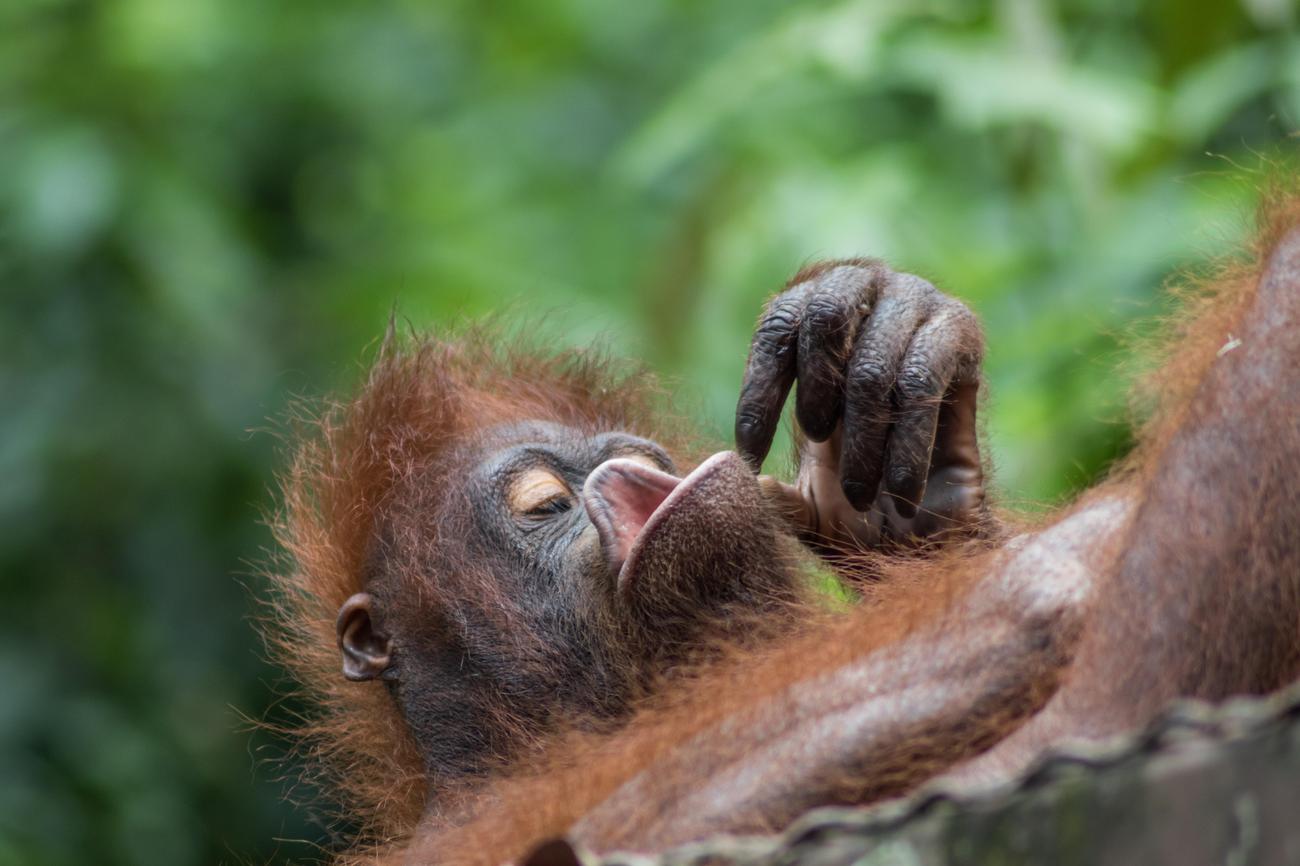
Orangutan Visual Traits
As a seasoned wildlife biologist and conservationist with expertise in primate research, I have had the privilege of studying the fascinating visual traits of orangutans. These enigmatic creatures possess a range of unique and captivating visual characteristics that are integral to their survival in their natural habitats of Sumatra and Borneo. In this article, we will delve into the intriguing world of orangutan visual traits, shedding light on what makes them truly remarkable and worthy of our protection.
Vibrant Fur Patterns
One of the first visual traits that catch the eye when observing orangutans is their long, reddish-brown fur. This vibrant coat serves as a distinguishing feature, making them easily recognizable among other primate species. While their fur is fairly sparse, especially on their chests, stomachs, and palms, orangutan coloration can range from dark-brown to pale reddish-orange, with the latter being the most common. This extraordinary fur pattern not only adds an element of aesthetic beauty but also aids in their blending with the canopy of the rainforest, offering them a certain level of camouflage and protection.
Key Point: The vibrant and distinctive fur patterns of orangutans not only make them visually appealing but also play a crucial role in their survival, allowing them to camouflage effectively within their natural habitat.
Peculiar Facial Expressions
Orangutans rely heavily on visual expressions to communicate with their fellow apes and to establish dominance or submission. Their large jaws and flattened noses contribute to a wide range of facial expressions, making them highly expressive creatures. From a raised eyebrow indicating curiosity to a tight-lipped expression showing aggression, these visual cues carry significant meaning within their social interactions. Observing their unique facial expressions provides invaluable insights into their intricate social dynamics and can even help researchers decipher their emotional state.
Key Point: The peculiar facial expressions of orangutans serve as a visual language, allowing them to communicate and navigate their complex social hierarchies.
Elusive Eye Gaze
One of the most striking features of orangutans is their elusive and captivating eye gaze. Their expressive brown eyes, framed by dark eye rings, draw you in and evoke a sense of familiarity. When locked in a gaze, it almost feels as if a deep connection is formed between human observers and these intelligent primates. Their eye gaze reflects their extraordinary cognitive abilities and adds to their enigmatic charm. Furthermore, understanding their eye gaze patterns can help researchers gain insights into their perception of the world around them and their interactions with their environment.
Key Point: The elusive and captivating eye gaze of orangutans not only captivates our attention but also provides a window into their extraordinary cognitive capabilities and their unique perspective on the world.
The Man of the Forest
Orangutans, also known as the “man of the forest,” possess a distinct physical appearance that sets them apart from other primates. They have a short, thick body with long arms and short legs, making them well-adapted to a life in the trees. This physical structure allows them to effortlessly swing through the forest canopy and forage for food. Their shaggy reddish hair adds to their charm and adds another layer of visual uniqueness to their overall appearance.
Key Point: The physical attributes of orangutans, including their short, thick bodies, long arms, and shaggy reddish hair, are tailored perfectly for their life in the rainforest, enabling them to navigate their habitat with exceptional agility and versatility.
Protecting Orangutan Habitats
Understanding and appreciating the visual traits of orangutans is not only fascinating but also crucial for their conservation. These remarkable primates, on the verge of extinction, are an essential part of the delicate ecosystem of Sumatra and Borneo. By conserving their habitats, not only can we ensure the survival of orangutans but also contribute to the well-being of local communities and the preservation of other species. It is crucial that we raise awareness about the importance of protecting these habitats and work towards sustainable solutions that will allow orangutans to thrive for generations to come.
Key Point: By conserving orangutan habitats, we not only protect these incredible creatures but also foster the preservation of local communities and other species, highlighting the interconnectedness of our shared ecosystem.
In conclusion, the visual traits of orangutans are as captivating as the forests they inhabit. Their vibrant fur patterns, peculiar facial expressions, elusive eye gaze, and distinct physical features make them a species worth protecting. As a seasoned wildlife biologist and conservationist, I am dedicated to unraveling the mysteries of orangutan visual traits and raising awareness about the remarkable nature of these captivating primates. Let us join forces to ensure the conservation of orangutans and their habitats, securing a future where they continue to inspire and intrigue us all.
Orangutans, with their red-hued fur and expressive faces, are truly captivating creatures. Have you ever wondered, “What do orangutans look like?” Well, you’re in luck! Click here to discover the incredible physical characteristics and unique traits that make orangutans stand out in the animal kingdom. Prepare to be amazed as you delve into the world of these fascinating primates! What Do Orangutans Look Like.
FAQ
Question 1
What are the unique visual traits of orangutans?
Answer 1
Orangutans have long, reddish-brown fur that is fairly sparse, especially on their chests, stomachs, and palms. They can measure up to 6ft in height when standing, with their arms extending almost 10ft. They have large jaws, flattened noses, and arms much longer than their legs. Orangutan coloration can range from dark-brown to pale reddish-orange, with reddish-orange being the most common. They have a short, thick body, long arms, short legs, and shaggy reddish hair.
Question 2
Where can orangutans be found?
Answer 2
Orangutans are mainly found in Sumatra and Borneo. They are great apes native to the rainforests of Indonesia and Malaysia. However, their range has decreased to parts of Borneo and Sumatra.
Question 3
What is the significance of orangutan visual traits?
Answer 3
The visual traits of orangutans, including their vibrant facial expressions, striking fur patterns, and elusive eye gaze, are important for their communication and survival. By understanding and appreciating these visual traits, we can better comprehend their behavior and contribute to their conservation.
Question 4
Are orangutans social animals?
Answer 4
Orangutans are solitary animals. Females spend several years caring for their young, while males are not involved in raising offspring. However, they do interact with each other occasionally, especially during mating season.
Question 5
Why is it important to conserve orangutan habitats?
Answer 5
By conserving orangutan habitats, we not only protect this endangered species but also support the well-being of local communities and other species. Orangutans serve as keystone species, playing a crucial role in maintaining the balance and biodiversity of their ecosystems.
